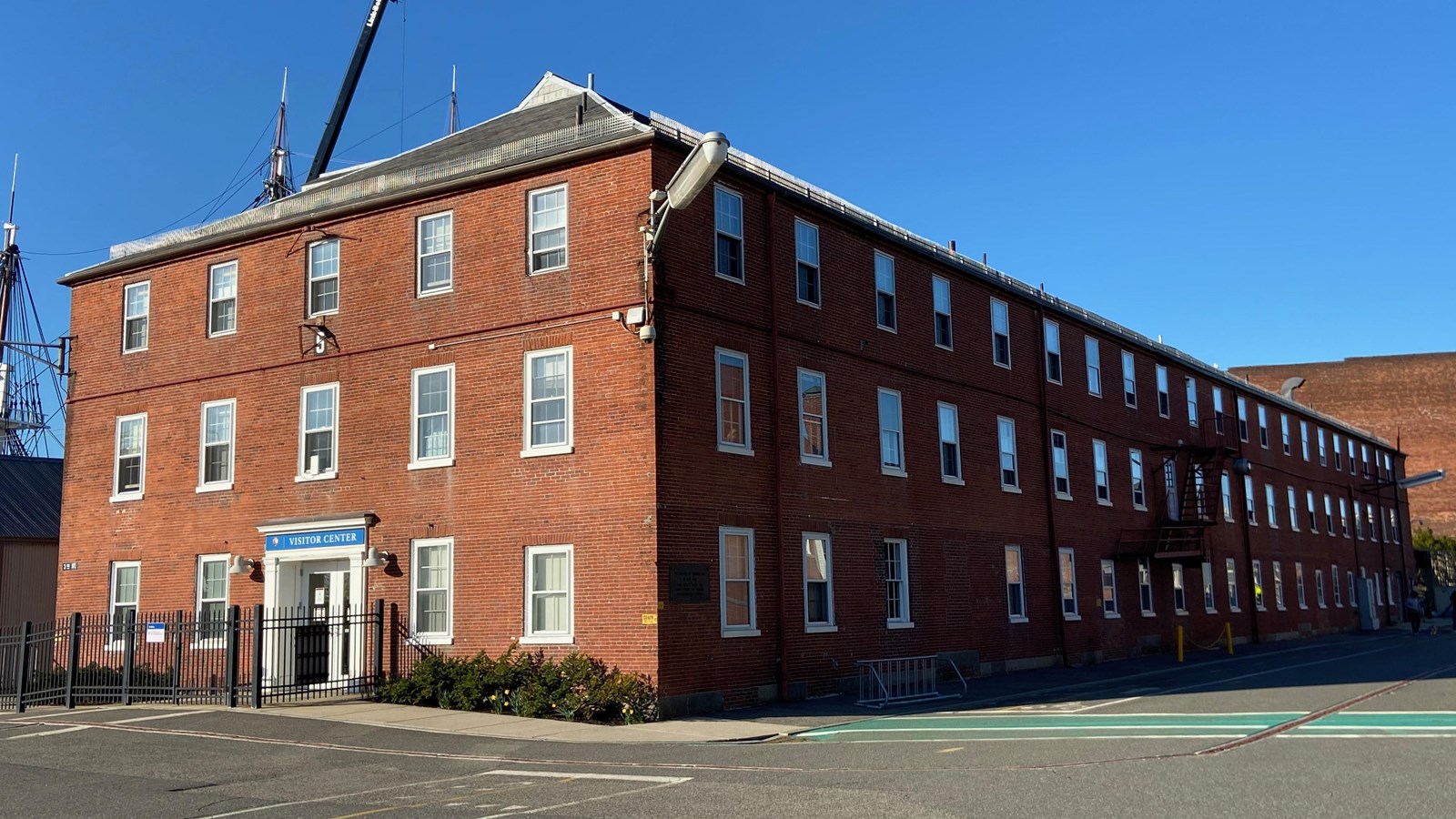Last updated: January 10, 2025
Place
Building 5

NPS Photo/Woods
Bicycle - Rack, Bus/Shuttle Stop, Fire Extinguisher, First Aid Kit Available, Gifts/Souvenirs/Books, Historical/Interpretive Information/Exhibits, Information, Information - Maps Available, Information - Ranger/Staff Member Present, Information Kiosk/Bulletin Board, Internet/WiFi Available, Public Transit, Restroom, Restroom - Accessible, Theater/Auditorium, Water - Bottle-Filling Station, Water - Drinking/Potable, Wheelchair Accessible, Wheelchairs Available
As the first warehouse building constructed at the Charlestown Navy Yard, Building 5 is the third-oldest structure in the yard. The Commandant's House (1805) and the Marine Barracks (1811) are the only buildings constructed before Building 5 (1816). This warehouse's plain, Federalist-style façade reflects its early storage function.
Building 5 resembles other warehouses built in Boston in the early 1800s. This sturdy building is over 200 feet long and three-stories high. While its pitched slate roof remains, original chimneys have been removed and many doors have been converted into windows.
No other building in the Charlestown Navy Yard has had as many strikingly different uses as Building 5, reflecting the complexity of the 175-year history of the US Navy in Boston.
Building 5 primarily stored lumber and other shipbuilding materials and was known as the Navy Store. By 1869 and into 1900, the Navy expanded the use of this large building to include various offices, as well as a dispensary (clinic), a print shop, a Naval Museum, and a library.
In the early 1900s, wishing to increase the services available within the Charlestown Navy Yard, the US Navy further expanded the use of Building 5. The U.S. Navy added a commissary (grocery store), a barber shop, and a clothing store. After the dispensary moved into its own building in 1905, a dental office opened in Building 5 (1906 to 1910). Also, during the first decades of the 1900s, the chaplain and the Naval Reserve had offices here. Naval officers and servicemen also refined their marksmanship at Building 5's Rifle Range and rehearsed for the Navy Band in the building's practice space.
In 1936, the Works Progress Administration (WPA) renovated the interior of Building 5. Still visible on the first floor are the huge, steel girders that the WPA installed to stabilize this heavily-used, over 200 year-old building. At this time (1936), the Navy Yard installed an exterior plaque at the northeast corner of Building 5 that marks the landing of British re-enforcements in the Battle of Bunker Hill on June 17, 1775.
World War II changed the use of Building 5 yet again. It became the Officers' Club and mess, office space, classrooms, and the Bachelor Officers' Quarters. These uses continued until 1974.
That year, the Charlestown Navy Yard closed and the National Park Service was charged with preserving the history of this Navy Yard and some of its buildings. Building 5, being close to the main entrance to the Yard (Gate 1) and the USS Constitution and Museum, made it an ideal location for a visitor center and exhibition space.
In 2008, the first floor of Building 5 opened as a visitor center with an exhibit on the history of the Charlestown Navy Yard called "Serving the Naval Fleet." Currently, the National Park Service and US Navy share the other floors of Building 5.
Sources
- Carlson, Stephen P. Charlestown Navy Yard Historic Resource Study, Vol 1-3. Boston, MA: Division of Cultural Resources Boston National Historical Park National Park Service U.S. Department of the Interior, 2010.
- McGrath, H. Thomas, Jr., Anne Booth, and Terry Wong. Historic Structure Report, Architectural Data Section, Buildings 4 and 5, Charlestown Navy Yard, Boston National Historical Park, Charlestown, MA. Denver, CO, Denver Service Center, National Park Service, U.S. Department of the Interior, August 1983.
